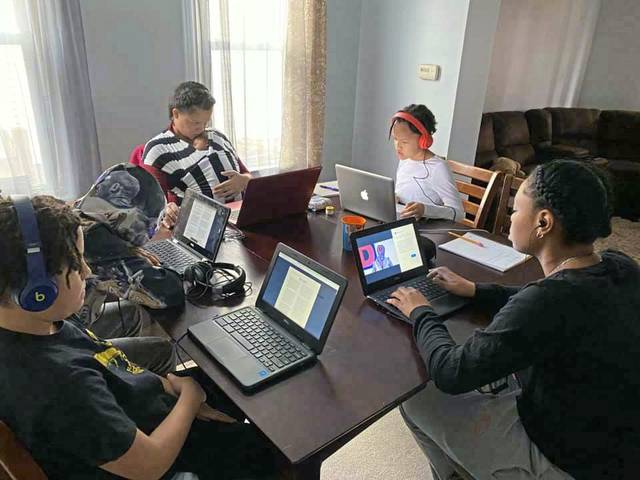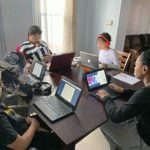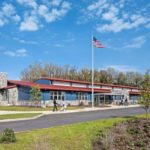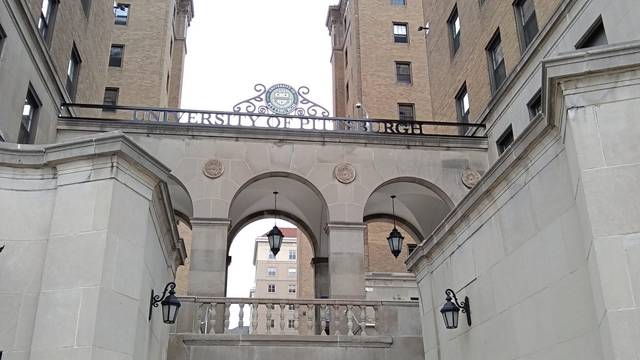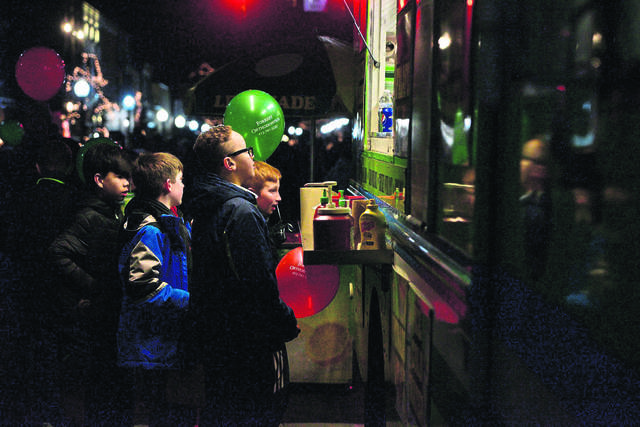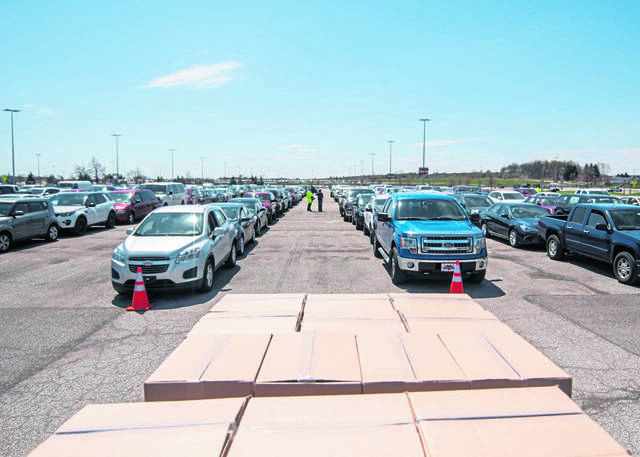Most days of the week, Page Hempfield tunes in for an advising appointment at 9 a.m. on Zoom. She and other students are able to check in, ask questions and get updates about homework and about their school, The Neighborhood Academy.
Then, in her bedroom of her North Versailles home, she transitions to school work. Using Google Classrooms, she can access prerecorded lessons and assignments to complete on a schedule that mimics block school days. On Mondays, she studies history, Spanish and English; on Tuesdays, chemistry and math and so on. The next day’s assignments are uploaded every day at noon.
Hempfield, 17, used to spend nearly 12 hours a day at The Neighborhood Academy, receiving three meals a day on the campus in Pittsburgh’s Stanton Heights neighborhood, working through rigorous courses and participating in several sports and clubs before finally taking the long bus ride home. She was active in African dance and drumming in the fall, and cheerleading in the winter. Now, she hardly needs to leave the room she shares with her twin sister, Amarie – also a Neighborhood Academy student.
Her day is different, Hempfield admits. But it’s a relief to be able to continue school work without interruption. At least that much hasn’t changed, she said.
“I miss the social aspect of being at school, but I feel like it’s teaching me, being at home, my own time management,” Hempfield said. “I only have a year and some change left before I go off to college, so it’s teaching me that I can actually do this and actually strive in this environment.”
Most schools in the region are struggling to provide consistency in remote learning. Experts say the pandemic has highlighted and widened inequities among school districts, neighborhoods and individual students. One recent study, led by a Carnegie Mellon University professor, showed that students of color and those that struggle with poverty are less likely to have access to the internet. Ananya Sen, assistant professor of information systems and economics at CMU’s Heinz College, said the trend will likely contribute to widespread educational inequality in the area and across the country.
“Online instruction is feasible only if children and youth have access to the Internet at home,” Sen said.
The Neighborhood Academy has a disproportionately high population of low-income and economically disadvantaged students, yet remote learning has proceeded without issue. Students resumed lessons after their scheduled spring break without ever returning to the building. There were no extra days off for faculty to plan new lessons or learn to use remote technology. According to administrators, 91% of students log on to complete their lessons every day.
A rigorous environment
The Neighborhood Academy, a faith-based college preparatory school, was established in 2001 with the mission statement to “break the generational cycle of poverty.” Having grown to an enrollment of 140, the school teaches sixth through 12th grade. The days last from 8 a.m. to 7:30 p.m, with students served three meals a day and offered a wide range of extracurricular activities and sports.
It’s a rigorous environment with a small staff, aimed particularly at students with demonstrated financial need. About 80% of students come from families with an income of $30,000 or less, said Head of School Anthony Williams, but 100% of graduates are accepted to college. While it is a private school, tuition is set on a sliding scale, sometimes as low as $50 a month.
Carolyn Sanford, assistant head of school for development, said the school is equally supported by individual giving and foundation and corporate giving. All students receive a scholarship, and there is talk among school leaders about possibly waiving tuition from families affected by layoffs and furloughs from the coronavirus pandemic.
Williams began working at the school when it was still a pilot program in 2000, right after he finished college at Edinboro University of Pennsylvania. In the last 20 years, he worked as an intern, a teacher, a college counselor and an administrator in Student Affairs. He is in his first school year as Head of School, succeeding the school’s co-founder, the Rev. Thomas Johnson Jr.
The school was established on the idea of leveling the playing field, Williams said. The entire approach — the scholarships, the long days of extra tutoring and advising, the six-week summer courses — is designed to keep disadvantaged students occupied and on track.
“It’s a constant balance of meeting students where they’re at and bridging their academic skillsets and preparing them for college readiness, despite the economic or academic challenges they may encounter,” Williams said.
The Neighborhood Academy, with its dawn-to-night schedule, was designed to keep students under its watchful eye. But under the pandemic lockdown, with students on their own at home, the stakes are even higher. Distance learning has to be powerful.
The staff has risen to the challenge like never before, Williams said. Earlier in the school year, the school received a donation from Comcast that allowed each student to have their own Chromebook laptop. Now, unlike most of the neighboring public high schools, Williams said, The Neighborhood Academy has a “one-to-one student-to-technology ratio.”
Hempfield said teachers and students like herself were already familiar with Google tools and other applications for digital schooling; they had often used Google Classrooms to post assignments. The transition was almost seamless.
Hempfield said she is grateful the school has been able to “roll with the punches.” When she talks with her best friend, who attends Allderdice High School in Squirrel Hill and began remote learning April 16, she can’t imagine how she would have handled such a prolonged break from coursework. Hempfield has been learning remotely since late March.
“I feel like I do have an advantage,” she said. “Because I feel like it kept me in that school mind.”
The school has also distinguished itself in that its grading guidelines have not changed – unlike many educational entities in the area. Pittsburgh Public Schools announced two weeks ago that all students will receive passing grades for the fourth quarter, and the University of Pittsburgh and Carnegie Mellon University have moved to pass/no credit and pass/fail grading, respectively.
The pandemic has actually spurred many conversations among faculty members about all that is possible with remote learning, said Brent Jernigan, head of academics. Perhaps there is greater possibility for teaching during summer vacation or extended school breaks. Perhaps the academy could even offer instruction to students who live too far away to be a part of the student body.
“It dares you to think maybe there could be a unique, authentic experience we could build upon or talk about,” he said. “Those types of things you thought you couldn’t do before are now conversations because of the pandemic. It’s opened up a lot of options and new doors.”
Maintaining focus
There are challenges. Like all school communities, Williams said there are students who are struggling with job losses, furloughs and family problems because of covid-19. Future planning has been thrown to the wayside.
“We are really proud of the engagement of our students and families,” he said. “We realize that each individual household is being impacted by the pandemic.”
Hempfield hasn’t been spared the general anxiety ushered in by the situation. She said she is scared waiting for whatever will happen next. She’s in the process of looking at colleges, considering a few universities in the area to study psychology. She wonders whether she’ll be able to return to class for her senior year, if she’ll participate in track and field again, if she’ll see her friends soon.
Sometimes it can be hard to focus, too, Hempfield said, as she vies for space and privacy in her shared bedroom, becoming accustomed to her dad’s booming voice down the hall and the constant activity of home life.
But the academy’s size presents an advantage for promoting emotional well-being throughout the uncertainty, Jernigan said. With a 10:1 student-faculty ratio, it is easy for teachers to start a dialogue and for students to get individual attention. The relationships can be customized and “intimate,” he said. Meals are also still being distributed by the school to about a third of students and provided to their entire families.
“We take a strong stance towards emotional health,” Jernigan said. “Without it, we don’t believe anything productive can really progress or evolve.”
The Neighborhood Academy is in the midst of planning for the fall, considering a “hybrid or blended” program, evaluating the regular experience in the school and finding ways to make the campus safe for instruction. It’s a lot of work, Williams said, juggling both professional and personal challenges that were unthinkable only a couple of months ago.
But he said he is “energized” by the way the school has handled the crisis thus far.
“I think upon the wonderful students,” he said, “who want something different for themselves.”


